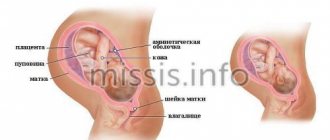Urinary tract infections are a common disease in everyday urological practice. Significant progress in the treatment of urinary tract infections has been observed over the past twenty years. The article touches upon such important issues as the etiology, pathogenesis and treatment of urinary tract infections in adults.
Urinary tract infections (UTIs) are a serious problem due to their prevalence and associated morbidity. According to statistics, they account for approximately 20% of all community-acquired and approximately 50% of nosocomial infections. Advances in recent decades have contributed to a better understanding of the pathogenesis of urinary tract infections and have elucidated the important role of both bacterial and patient-related factors in the development or prevention of infection.
The dynamic development of antibacterial therapy has greatly facilitated the correct treatment of UTIs, but the inappropriate and widespread abuse of antibacterial drugs has led to an increase in drug resistance of microorganisms.
Epidemiology of UTIs
The content of the article
Urinary tract infections are one of the most common infectious diseases in humans.
The incidence of UTI depends on the sex and age of the subjects, as well as on the specific characteristics of the study population.
- In the neonatal period, UTI is detected in approximately 60% of cases in boys, which is associated with a higher incidence of congenital urinary tract defects.
- From the age of three months, this trend is reversed, and the incidence of urinary tract infections in girls and women is ten times higher than in their male counterparts.
- Every second woman suffers from cystitis at least once in her life, and 10% of sexually active women develop UTIs once a year.
- Urinary tract infections are rare in men under 50 years of age, but in patients over 60 years of age the number of reported cases is growing rapidly. This is associated with the appearance of bladder obstruction, most often in the form of benign prostatic hyperplasia.
- The incidence of UTIs is much higher among people hospitalized for any reason or living in nursing homes or nursing homes.
Benign Prostatic Hyperplasia
The risk of UTI increases when there is an obstruction to the flow of urine or when circumstances favor bacterial colonization and growth. Physiological factors that predispose to UTIs include pregnancy, old age, and medical conditions such as diabetes and urolithiasis.
How are kidney and ureter diseases treated?
Treatment depends on the disease and its stage, as well as the presence of concomitant pathology. It includes conservative therapy (drugs affecting bladder activity, prostate volume, litholytic and lithokinetic drugs, diuretics, antispasmodics, immunomodulators, antipyretics and anti-inflammatory drugs) and surgical methods in cases where conservative therapy is not indicated or is not effective .
In our clinic, we perform endoscopic and laparoscopic operations with minimal intervention in the body, which allow us to completely remove pathological neoplasms of organs. You can find detailed descriptions of the operations we perform in the “Treatment Methods” section.
Etiology and pathogenesis of UTI
The most common causes of UTIs are bacteria, and less commonly viruses, fungi, or parasites. The prevalence of certain types of bacteria isolated from patient urine depends largely on the population being studied. The situation is completely different for patients receiving outpatient treatment than for patients in hospitals.
Under physiological conditions, the urinary tract is sterile except at the end of the urethra. The first episode of UTI in an outpatient setting is caused by Escherichia coli in 80% of cases, Staphylococcus saprophyticus in 10-15% (except for the group of young sexually active women, in which it accounts for about 30%), other gram-negative bacteria (Proteus mirabilis, Klebsiella spp.) or gram-positive (staphylococci, streptococci, enterococci). 70% of recurrent community-acquired infections are caused by Escherichia coli. Also, the most common nosocomial infections are caused by Escherichia coli (about 50%), Enterobacter spp., Pseudomonas spp., Serratia marcescens, as well as staphylococci, enterococci and fungi.
Escherichia coli
In 95% of patients, a UTI is the result of infection with a single strain of bacteria. Infection with several strains is observed in 5% of patients, mainly in catheterized patients with weakened immunity, neurogenic bladder disorders or defects of the urinary system.
Infection of the urinary system can occur through the ascending route (urogenic infections), the bloodstream (hematogenous infections - very rarely caused mainly by Staphylococcus aureus), the lymphatic route, or continuously (in the presence of a urogenital or urogenital fistula).
A UTI is almost always caused by bacteria entering the urethra. Under physiological conditions, bacteria often enter the urinary tract, but due to the body's defense mechanisms, the development of UTIs is rare.
The most important natural defense mechanisms against UTIs are:
- length of the urethra in men;
- ureteral peristalsis, normal function of vesicoureteral valves;
- acidification and concentration of urine;
- correct bacterial flora of the vagina and area around the urethra;
- antibacterial properties of prostate secretion;
- mechanisms for preventing bacterial adhesion in the urinary tract: mechanical impact of a stream of urine, mucopolysaccharides of the bladder wall, IgG and IgA antibodies.
Urinary tract infections rarely occur in healthy people with normal anatomical structure and physiological function of the urinary tract. In case of obstructed urine outflow or weakening of the body due to systemic diseases (diabetes, gout, tumor process), we often encounter inflammatory changes in the urinary system.
Gout
The most common factors contributing to the development of a urinary tract infection include:
- 1st pregnancy,
- old age,
- obstruction to the outflow of urine - urolithiasis, prostate adenoma,
- atrogenic factors - urinary tract instrumentation (cystoscopy, bladder catheterization, ascending pyelography),
- congenital malformations of the urinary tract - double cup-pelvic system, retrograde vesicoureteral outflow,
- diabetes, gout,
- neurogenic bladder,
- end-stage renal failure (dialysis),
- sexual relations,
- prolonged immobilization in bed.
Urine in the urinary tract of a healthy person is sterile. The presence of bacteria in it indicates infection.
The main symptom for diagnosing a UTI is the so-called significant bacteriuria, when the number of bacteria in 1 ml of fresh, aseptically collected urine exceeds 100,000.
The occurrence of significant bacteriuria by gender and age is presented below:
| Age | women | Men |
| School age | 1% | 0,03% |
| 15-25 years | 3% | 0,5% |
| 30-35 years | 5-10% | up to 1% |
| 50-70 years | > 10% | up to 4% |
| over 80 years old | > 20% | > 10% |
In people with dysuria, the presence of up to 100 bacteria may indicate a urinary tract infection. Treatment for UTIs should begin as soon as clinical symptoms appear.
Tasks of a urologist:
- fight against bacteriuria,
- refusal of instrumentation of the urinary tract - bladder catheterization,
- proper treatment of systemic diseases.
General principles of treatment of urinary infections
- Antibacterial treatment.
- When choosing a drug and method of its use, the following are taken into account:
- drug sensitivity of the bacterial strain;
- patient tolerability of the drug;
- severity of infection;
- medical expenses.
- Symptomatic treatment depending on the type of disease:
- bed rest;
- regular and complete emptying of the bladder;
- painkillers, antispasmodics;
- fluid intake (diuresis more than 1.5 liters per day);
- refusal of nephrotoxic drugs.
Fluid intake
The main goal of antimicrobial treatment is to eliminate pathogenic bacteria and prevent recurrent UTIs. Treatment procedures are differentiated depending on the severity of the infection and the sensitivity of the bacteria to the drugs used.
We now have a number of medications that are particularly useful in treating UTIs. These include antibiotics, fluoroquinolones, chemotherapeutic agents (eg, Bactrim, Urotrim, Bispetol) and herbal preparations.
The basic principle of antimicrobial treatment is to perform an antibiogram of bacteria growing from the inflamed area and carry out targeted treatment. In the case of acute infections with unpleasant signs, high fever and general symptoms, urologists prescribe broad-spectrum antibiotics that act on gram-negative bacteria as first-line drugs. In these cases, the use of fluoroquinolones is increasingly recommended.
The patient must submit urine for bacteriological analysis and antibiogram before starting treatment, as well as 2, 14, 30 days after starting treatment. If urinary sepsis is suspected during the peak of fever, blood is taken for culture and antibiogram, and additional treatment with two broad-spectrum antibiotics is started.
Antibioticogram
Classification of urinary tract infections
Depending on the location of the infection, the age of the patient, the severity of symptoms and the presence of additional diseases, the following classification of UTIs has been proposed:
Depending on the severity of clinical symptoms:
- Symptomatic urinary tract infections.
A. simple - in people without aggravating factors:
- acute inflammation of the lower urinary tract;
- recurrent inflammation of the lower urinary tract;
- acute pyelonephritis.
Acute pyelonephritis
b. complex - in people with aggravating circumstances:
- acute inflammation of the lower urinary tract;
- recurrent inflammation of the lower urinary tract;
- acute pyelonephritis.
- Asymptomatic bacteriuria:
A. in patients without additional risk factors;
b. in patients with additional risk factors.
Depending on the location of the infection:
- Infections of the upper urinary tract: kidneys, vesico-pelvic system, perinephric area.
- Infection of the lower urinary tract: bladder, urethra.
Effective treatment of urethritis and cystitis
After confirming the diagnosis, the doctor prescribes medicine to combat the infection and symptoms:
- antibiotics,
- antispasmodics,
- painkillers.
Individuals suffering from a urinary tract infection should drink plenty of water to overcome dehydration. This also promotes the production of more urine and intensive flushing of infection from the urinary tract.
Patients should avoid drinking carbonated drinks, as well as tea and coffee. They irritate the bladder mucosa.
To relieve abdominal and back pain, use warm heating pads or warm compresses.
Asymptomatic bacteriuria
Most often it is discovered by chance during routine periodic examinations, since there are no subjective symptoms prompting the patient to seek medical help, and no noticeable changes in the urinary system are detected.
In the absence of concomitant disturbances in the outflow of urine, the course is usually mild and does not require treatment. In patients with urinary tract obstruction, symptoms usually do not resolve spontaneously. Antibacterial treatment is recommended for this group of patients.
Additionally, treatment should be started in the following cases:
- pregnancy (risk of pyelonephritis, premature birth, low birth weight of the newborn);
- before planned surgery (mainly on the urinary tract);
- diabetes.
In the first trimester of pregnancy, an antibiogram should always be performed before starting treatment for a UTI.
Acute pyelonephritis
Bacterial nonspecific inflammation of the renal system. The infection is mainly caused by Escherichia coli or other gram-negative bacilli: Klebsiella spp., Proteus vulgaris. It most often occurs in girls over 5 years of age and in women before menopause.
In the case of pyelonephritis, the following is observed:
- sudden onset;
- fever (up to 40 ° C);
- chills;
- pain in the lumbar region (positive Goldflam sign on this side);
- nausea, vomiting;
- increased ESR, peripheral blood leukocytosis;
- in urine: numerous bacteria, leukocytes, leukocyte cells, protein, red blood cells.
Nausea with pyelonephritis
In case of AP, in addition to urine analysis and culture, abdominal ultrasound and urography (after the disappearance of acute symptoms) should always be performed to visualize disturbances in the outflow of urine.
Patients with mild acute pyelonephritis can be treated on an outpatient basis. In severe cases, patients must be hospitalized. Initially, medications are used parenterally. Only 24 hours after the fever has disappeared, they can be administered orally.
Hospitalization of patients with acute pyelonephritis is carried out in the following cases:
- severe infection;
- no improvement after 2 days of targeted antibiotic therapy;
- difficult outflow of urine, mainly in older people and patients with diabetes;
- pregnancy.
If fever and low back pain persist after 3 days of treatment, repeat urine culture and repeat abdominal ultrasound to look for peri- or intrarenal abscess or previously unrecognized hip joint abnormalities.
The most common complications of acute pyelonephritis include chronic pyelonephritis, urinary tract sepsis, hydronephrosis, perirenal abscess, renal papillary necrosis, and scarring of the renal cortex.
Chronic pyelonephritis most often affects women. It is characterized by an insidious onset, a long, rarely symptomatic course with periodic exacerbations. Often leads to kidney failure.
General information about oncological diseases of the genitourinary system
Tumors of the genitourinary organs in men account for about 9.2% of all malignant neoplasms. Over the past 10 years, the number of pathologies in this group has increased by approximately a third. This makes us think about the importance of timely diagnosis of these diseases and adequate treatment.
Malignant neoplasms are dangerous due to their insidiousness. They grow for a long time and damage surrounding tissues completely asymptomatically. An oncological disease can be detected even in a person who does not present any complaints. And only when the tumor reaches a large size does it begin to disrupt the functioning of organs and systems. For example, compression of the bladder by a tumor leads to problems with urination. The outflow of urine is disrupted, discomfort and pain appear. And by the time you see a doctor, the tumor can already metastasize to vital organs. This makes the prognosis less favorable and significantly complicates treatment.
This course of diseases determines the trends of modern medicine. Prevention is the key to the health of every person. Even in the absence of complaints, it is necessary to undergo preventive examinations and tests at least once a year. There is no need to wait for the manifestations of the disease, because by this time it may already be too late to carry out treatment.
Ultrasound diagnostics is the main method for identifying urological diseases. Regular examinations make it possible to diagnose tumors of the kidneys, bladder, prostate and testicles in the early stages. The earlier pathological changes in the organ were detected, the more favorable the prognosis for treatment.
Modern ultrasound machines make it possible to detect tumors of the smallest size: penile cancer, kidney cancer, testicular tumors, etc. This is evidenced by the many years of experience of diagnosticians and positive experience in treating patients with early-stage urological cancer.
It is very painful to watch a person quickly “burn out.” Until recently active and cheerful, he is losing weight, losing the perky sparkle in his eyes, and coming to terms with the proximity of death. Relatives and friends of this person are ready to give any money for treatment, to go to the best clinics in the world, just to save him. But all this often does not lead to results. Money, fortunately or unfortunately, cannot solve everything in this life. But all you had to do was carve out a couple of hours for yourself in the hustle and bustle of life and visit medical specialists once a year and undergo an examination. And then the outcome could be completely different.
There is a list of warning symptoms that should be a reason for immediate contact with an ultrasound specialist, and then with a urologist. Among them:
- Hematuria. The appearance of obvious bloody discharge in the urine usually indicates the development of a serious disease: cancer or inflammatory.
- Dysuria. This phenomenon is accompanied by painful or difficult urination.
- Lower back pain.
- Stomach ache.
- Swelling or hardening of the testicles.
Based on the ultrasound report and laboratory data, the urologist will be able to correctly diagnose and prescribe timely, adequate therapy.
Don't neglect your health. If an ultrasound detects a suspicion of a tumor, undergo further examination. Don’t put off your health “for later.” After 2 or 3 months, the changes may become irreversible and it will be impossible to help.
Detection of a tumor in the early stages is the key to successful treatment.
Bladder cancer: diagnosis and treatment
Oncological diseases of the bladder are widespread. Every year the disease affects more than 430 thousand people in the world. And this figure continues to grow steadily.
In Russia, bladder cancer is one of the leaders of sad statistics. In terms of frequency, it is second only to prostate cancer in men and kidney cancer in women.
The development of the disease is promoted by:
- Tobacco smoking In recent years, the role of this factor has increased significantly due to the popularity of electronic cigarettes. In smokers, malignant neoplasms of the bladder occur 4-7 times more often compared to people without bad habits.
- Age Men and women over 55 are most at risk of developing bladder cancer. However, disappointing current trends indicate that oncology is “getting younger” and affecting people of working age.
- Gender The incidence of bladder cancer is much higher in men than in women. However, representatives of the fair sex have a more unfavorable prognosis for the outcome of the disease.
- Chemicals and medications The bladder is a reservoir for the accumulation of urine containing substances toxic to the body. Therefore, working in hazardous chemical plants and taking certain groups of medications may increase the risk of developing urinary tract cancer.
- Chronic bladder diseases Stones and infectious lesions lead to constant low-grade inflammation and impaired cell differentiation. The larger and stronger the damage, the higher the risk of the appearance of atypical, malignant cells.
The main symptoms of bladder cancer are:
- macrohematuria, microhematuria (appearance of blood in the urine);
- frequent and painful urination;
- frequent urination at night (nocturia);
- lower back pain localized on one side;
- loss of appetite and weight loss against a background of general well-being.
The appearance of blood in the urine is one of the most alarming symptoms. It occurs in more than 92% of patients diagnosed with bladder cancer. Blood in the urine is not always visible to the naked eye: sometimes it is only single red blood cells that are detected during a microscopic examination.
Due to regular blood loss, anemia is observed in a clinical blood test. As a rule, the more pronounced the symptoms, the more advanced the stage of the oncological process will be during diagnostic measures.
A malignant tumor is classified according to the TMN system, which allows us to describe the key features of the tumor process:
- Tumor Size of the primary tumor, location
- Nodus (node) Metastases in regional lymph nodes, their location and number
- Metastasis (metastases) Metastases in distant lymph nodes and other organs, their number and location
Bladder cancer can be complicated by the following conditions:
- Compression of the ureteric orifice by a tumor. Leads to disruption of urine outflow and functional changes in the kidneys.
- Pyelonephritis. Inflammatory disease of the renal parenchyma of bacterial origin.
- Kidney failure. Develops due to the progression of functional changes in kidney tissue.
- Anemia.
- Ureterohydronephrosis.
- Chronic urinary retention.
To ensure adequate urine flow, doctors are forced to perform surgery to remove the nephrostomy.
Typical localization of distant metastases in bladder cancer:
- brain;
- lungs;
- bones.
The main diagnostic measures for identifying bladder cancer are:
- Urethrocystoscopy This is an endoscopic examination that allows you to evaluate the condition of the bladder, as well as the urethra.
- Biopsy and histological examination are carried out to detect atypical bladder cells.
- Computed tomography makes it possible to diagnose even the most minor changes in tissues, allowing one to suspect the development of a tumor process.
- Ultrasound examination Detects pathological formations of the bladder. Modern equipment and extensive experience of ultrasound diagnostic doctors also make it possible to detect changes in the structure of the organ in the early stages. The method is accessible and suitable for carrying out preventive examinations in all groups of the population.
Bladder cancer treatment
The main method of treating cancer is surgery. Chemotherapy and radiation therapy may also be used. The choice of treatment tactics largely depends on the type of bladder cancer, as well as the extent of the pathological process.
Early consultation with a doctor is the key to a favorable outcome. The larger the bladder tumor and the number of metastases, the more unfavorable the prognosis of the disease. Regular preventive examinations allow you to identify pathological changes much earlier, as well as make treatment more effective.
To reduce your risk of developing bladder cancer, you should:
- Quit active and passive smoking.
- Maintain a drinking regime (the amount of water is calculated individually depending on body weight).
- Reduce exposure to occupational hazards (do not neglect the use of personal protective equipment if you work in hazardous industries).
- Treat acute diseases of the genitourinary system in a timely manner.
Following these simple rules will help to significantly reduce the risk of developing bladder cancer.
Kidney cancer: symptoms and treatment
Kidney cancer belongs to the group of oncological diseases. This pathological process can be either unilateral or bilateral. Kidney cancer quickly begins to grow deep into the kidney tissue and metastasizes to neighboring organs and systems. Tumor cells contribute to the destruction of healthy tissues and replace them. As a result, the organ cannot fully participate in blood filtration, and intoxication of the body increases.
There is a worldwide trend towards an increase in the incidence of kidney cancer. This is due to a significant increase in life expectancy in developed countries. Every year in Russia, kidney cancer is diagnosed in more than 20 thousand people. Men suffer from kidney cancer more often, but in women this pathology more often causes death.
Kidney cancer also occurs in children. Oncology in childhood is represented by embryonic nephroblastoma. It accounts for 90% of kidney tumors in children. Its main features are:
- rapid growth and metastasis;
- hereditary predisposition is detected in only 2% of cases;
- most often detected between the ages of 2 and 5 years;
- about 10% of cases are accompanied by other developmental defects;
- up to 10% of cases – bilateral kidney damage.
Until now, it has not been possible to reliably establish risk factors for the development of kidney pathologies. However, it is believed that the appearance of renal oncology is facilitated by:
- tobacco smoking (including passive);
- long-term use of diuretic drugs;
- occupational hazards (agricultural chemicals, dyes, etc.);
- overweight, metabolic syndrome;
- arterial hypertension;
- diabetes;
- long-term hemodialysis;
- viral hepatitis;
- genetic predisposition;
- polycystic kidney disease.
Quite often, kidney cancer occurs against the background of nephrosclerosis, which is formed due to damage to kidney tissue by harmful factors of various etiologies. Early identification of risk factors allows you to minimize their impact on the body and, in the future, avoid the development of kidney cancer.
Symptoms of kidney damage by cancer
The most characteristic of internal kidney damage are:
- arterial hypertension (renal origin);
- cachexia or significant weight loss;
- increased body temperature, fever;
- amyloidosis (deposition of pathological amyloid protein in the kidneys);
- increased ESR;
- anemia;
- increased calcium levels in the blood;
- polycythemia;
- impaired renal function;
- hematuria;
- general weakness, dizziness;
- nausea, vomiting.
In children, the first symptoms of kidney cancer may be the appearance of blood in the urine, as well as a dense, “bulging” abdomen.
Complications of kidney cancer are:
- Metastases in the lungs Accompanied by a cough not associated with ARVI and pulmonary pathology. Hemoptysis may occur.
- Metastases in the brain are accompanied by severe pain in the skull and neuralgia.
- Metastases in the liver Accompanied by a bitter taste in the mouth. Pain appears in the right hypochondrium, the skin and mucous membranes become jaundiced.
- Metastases in the bones Aches and pains appear in the bones. During X-ray examination, characteristic metastatic formations are detected. The incidence of fractures increases due to increased fragility of bone tissue.
The danger of cancer lies in its long asymptomatic course. In order to diagnose pathology in a timely manner, a responsible approach to your health is necessary: it is important to regularly attend preventive examinations and take tests. The main diagnostic measures are:
- CT with intravenous contrast;
- Ultrasound diagnostics;
- Magnetic resonance imaging;
- renal angiography;
- biopsy with histological examination;
For the treatment of kidney cancer, the following are used:
- surgical interventions;
- immune therapy;
- targeted therapy;
- chemotherapy;
- radiation therapy;
- hormonal therapy.
The prognosis of the disease is more favorable when cancer is detected at an early stage.
Infectious and inflammatory diseases of the genitourinary system
Infections of the reproductive and urinary systems are quite common. More than 50% of women have experienced the symptoms of these diseases at least once in their lives. Among men under 35 years of age, about 15% experience diseases of the genitourinary system. And over the age of 50, this percentage increases rapidly. In particular, this is associated with the onset of prostate adenoma.
In childhood, infectious and inflammatory processes are much less common; they are observed in 8% of girls and 2% of boys.
The insidiousness of pelvic inflammatory diseases lies in the high probability of transition from an acute inflammatory process to a chronic one, as well as in the involvement of neighboring organs and systems in the pathology. Thus, cystitis leads to pathological changes in the kidneys. Therefore, it is important to diagnose the pathology in a timely manner and consult a specialist.
How do infections develop in men and women?
Differences in the anatomical structure of organs lead to specific manifestations of the disease.
In women, infections develop more often and faster. This is due to the fact that their urethra is shorter and wider. This makes the infection penetrate faster. Therefore, women have urethritis (inflammation of the urethra) and cystitis (inflammation of the bladder). Additional prerequisites for the development of these pathologies are the proximity of the anus and vagina. In case of violations of hygiene rules, microtraumas during sexual intercourse, a favorable environment appears for the proliferation of pathogenic microorganisms.
In men, the urethra is an organ not only of the urinary system, but also of the reproductive system. During ejaculation, seminal fluid passes through it. Infections in men most often develop after sexual intercourse, as well as when the urethra is compressed by an enlarged prostate gland. The latter factor contributes to stagnation of urine and the proliferation of bacteria and viruses in it.
The main symptoms of the development of infectious diseases of the genitourinary system are:
- feeling of incomplete emptying of the bladder;
- pain during urination;
- pain in the abdomen and lower back of varying degrees of severity and character;
- burning during urination;
- change in urine color, cloudiness;
- change in urine odor;
- frequent and painful urge to urinate.
In addition to local symptoms of infection, general symptoms appear: weakness, nausea, vomiting, increased body temperature.
Classification of genitourinary infections of various types
Infectious lesions of the urinary system can be classified according to location and nature of the course.
The most common localizations are infections of the lower sections: bladder, urethra. The upper urinary tract (kidneys and ureters) is less commonly affected.
Depending on the nature of the disease, it can be complicated or uncomplicated.
With the development of complications, disturbances in the outflow of urine, structural changes appear and are supplemented by concomitant diseases. Most often, the development of complicated infections is caused by atypical pathogens.
Nonspecific infections are caused by representatives of opportunistic microflora. Normally, these microorganisms live in the human body and do not cause disease. But when the immune system is weakened, staphylococci, streptococci, and E. coli become the cause of pathology.
Specific infections are those that are sexually transmitted:
- gonococci;
- Trichomonas;
- chlamydia;
- mycoplasma, etc.
Common pathogens of infectious diseases of the genitourinary system
The most common diseases of the genitourinary system are bacteria, viruses, protozoa and fungi.
The causative agents of uncomplicated infections are:
- Escherichia coli (E.Coli) in about 90% of cases;
- saprophytic staphylococcus (Staphylococcus saprophiticus) about 5% of cases;
- proteus mirabilis (Proteus mirabilis);
- Klebsiella spp.
An uncomplicated type of infection is usually provoked by one type of bacteria. Complicated infections can be caused by a combination of several pathogens.
The causative agents of specific infections are:
Gonorrhea
The causative agents of the disease are Neisser's gonococci. The inflammatory process is localized on the mucous membranes of the genitourinary system. Under unfavorable circumstances, the infection can spread to the rectum, eyes, oral mucosa, etc.
The incubation period for gonorrhea is 3–5 days. The main symptoms are:
- pain during urination;
- purulent discharge from the urethra;
- frequent urination.
In men, gonorrhea often occurs subacutely, the clinical picture is erased, and the symptoms are less pronounced.
Chlamydia
The disease most often has a hidden course. Caused by chlamydia. The main symptoms are:
- itching in the perineal area;
- pathological discharge from the genitals;
- lower back pain;
- discomfort when urinating.
Chlamydia accounts for about 20% of sexually transmitted infections.
Who is at risk for genitourinary infections?
Diseases of the genitourinary system can develop at any age. However, the most susceptible to developing infections are:
- Women A special risk group is women during menopause, as well as girls who do not use barrier methods of contraception.
- Persons with developmental anomalies of the genitourinary organs.
- Patients with chronic diseases of the genitourinary system.
- Patients with immunodeficiency conditions.
- Patients with pathologies of the endocrine system (diabetes mellitus).
Diagnosis of genitourinary infections
First of all, you should contact a urologist. You may also need to consult a dermatovenerologist if you suspect a genitourinary tract infection.
Next, laboratory and instrumental studies are prescribed:
- Urinalysis (general urinalysis, Nechiporenko urine analysis).
- Clinical blood test with leukocyte formula.
- Urine culture for microflora (necessary to determine the sensitivity of microorganisms to antibiotics).
- Biochemical blood test (to determine the level of creatinine and urea in the blood serum).
- ESR.
- Ultrasound of the abdominal cavity and pelvis (to determine the condition of the kidneys, ureters, bladder, etc.).
- Urographic examination.
- Computed tomography of the pelvic organs (if necessary).
Treatment of genitourinary infections
The main group of drugs used to treat genitourinary infections are antibiotics. Depending on the severity of symptoms, the method of administration is selected individually. They can be prescribed in the form of tablets, intramuscular or intravenous injections. Nowadays you can buy antibacterial drugs without a prescription in almost any pharmacy. However, you should not self-medicate. If you do not determine the sensitivity of pathogenic microorganisms to an antibiotic or choose the wrong treatment tactics, the course of the disease will only worsen.
To ensure quality treatment, you should definitely seek qualified medical help.
Benefits of treatment at the Healer medical center
An integrated approach is important in diagnosing diseases of the genitourinary system. Pathologies can be extremely diverse in their manifestations, so a large number of laboratory and instrumental research techniques are required, as well as consultations with related specialists.
At the Healer medical center, all professionals are gathered in one place. Our highly qualified specialists will understand even the most complex clinical cases. Our policy is to order only those studies that are necessary to confirm and differentiate the diagnosis. No overpayments for unnecessary tests!
You can complete all examinations quickly and comfortably in one place. Our clinic strives to help every patient return to an active and healthy lifestyle as soon as possible!
Cystitis - inflammation of the bladder
Acute cystitis in people under 50 years of age applies only to women. This is an inflammation of the mucous membrane, sometimes of the deeper layers of the bladder wall.
Cystitis
Symptoms:
- sudden onset;
- symptoms of bladder irritation (pollakiuria, urge, painful urination);
- pain above the pubic joint;
- red blood cells, white blood cells and numerous bacteria are found in the urine.
Young women with dysuria usually develop one of three types of infection: inflammation of the bladder, urethra, or vagina. These diseases are differentiated based on clinical symptoms and laboratory urine test results.
| Diagnosis | Piuria | Hematuria | Bacteriuria |
| Cystitis | usually | Sometimes | From 100 to 100 thousand |
| Urethritis | usually | rarely | up to 100 |
| Vaginitis | rarely | rarely | up to 100 |
With vaginitis, there is discharge, itching in the vagina, pain during sexual intercourse, but there is no pollakiuria or painful urge to urinate.
Treatment of cystitis should be carried out from 3 to 7 days. In the uncomplicated form, the effectiveness of 3-day treatment is the same as that of 7-day treatment, but fewer side effects were found.
Urologists use longer treatment in women with the following conditions:
- pregnancy, diabetes;
- symptoms last more than 7 days;
- vaginal contraception;
- age over 65 years.
The most common pathologies
The most common pathologies of the bladder are:
- Diverticula A sac-like depression forms in the wall of the bladder, which is connected to the cavity by a small channel. The size of the pouch can vary significantly. As a rule, bladder diverticula are rare. However, multiple diverticulosis is sometimes diagnosed. Typical localization of the pathological process: on the side or behind the bladder. The main cause of the disease is developmental anomalies in the wall of the organ during the prenatal period. Acquired diverticula are quite rare and develop against the background of prostate adenoma.
- Cystitis The female body is more susceptible to the development of inflammatory diseases due to the anatomical features of the urethra: it is wide and short, so pathogenic microorganisms easily penetrate the bladder. Cystitis is diagnosed much less frequently in men. The main reason for the development of pathology is the penetration of infection into the bladder and the development of inflammation. People who lead a sedentary lifestyle are also at risk. Since stagnation of urine creates a favorable environment for the growth and reproduction of pathogens.
- Cystalgia (bladder neurosis) Accompanied by severe pain. Cystalgia is often diagnosed in individuals with a labile nervous system. As a rule, these are girls and women with increased emotionality, mood swings and increased sensitivity. Cystalgia is quite often diagnosed in women who, for some psychological reason, avoid sexual intercourse. There are no objective data indicating pathology of the genitourinary system. Therefore, treatment is carried out simultaneously with the study of the emotional state by a psychologist or psychiatrist.
- Urolithiasis Disorders of nutrition and metabolism lead to the formation of stones or sand in the organs of the genitourinary system. Formations can appear in both the kidneys and the bladder. They have different configurations and structures. The course of urolithiasis is accompanied by a period of exacerbations and remissions. For a long time, the resulting stone does not disturb its bearer in any way. However, when it gets into a narrow space (for example, the ureter), unbearable pain appears, blood in the urine, etc. The sad trend is that urolithiasis is becoming “younger”. Now not only young people, but even teenagers are faced with pathology.
- Tumors of the genitourinary system Tumors can be benign or malignant. Under an unfavorable combination of factors, benign neoplasms can become malignant (acquire a malignant character), and their course becomes more aggressive. The main danger of tumors is their long asymptomatic course. Quite often, pain and discomfort appear only when the neoplasm has grown deep into the tissue of an organ or even neighboring anatomical structures.
- Bladder atony (urinary incontinence) A delicate problem that is usually not talked about. However, not only older people suffer from urinary incontinence, but also young girls (for example, after childbirth). This condition significantly worsens the quality of life of patients, causes a feeling of inferiority and the development of complexes. Therefore, it is extremely important to carry out timely diagnosis of this condition and select adequate therapy.
- Other diseases Cysts, sclerosis, tuberculosis, ulcers are only a small part of the diseases of the genitourinary system in women and men. The list of urological diseases is quite wide, so it is important to be closely monitored by a specialist to exclude the development of even one of them.
Urethritis
Most often, the disease is associated with sexual contact, catheterization or endoscopy of the bladder. Urethritis always occurs in patients with an indwelling urinary catheter. The opening of the urethra is red, patients complain of a number of symptoms:
- burning pain and itching in the urethra;
- leakage of mucous, glassy or purulent discharge;
- lower abdominal pain.
Until recently, the most common cause of urethritis was gonorrhea. The infections are now twice as likely to be caused by Chlamydia trachomatis and Ureoplasma urealyticum. In 30% of cases, gonorrhea infection coexists with two others.
Urethritis
Standard urine cultures are often sterile, followed by immunological tests and isolation of microorganisms on specially prepared media.
The most common treatments are a single dose of fluoroquinolones and doxycycline for 7 days.
Recurrent urinary tract infections
Recurrent UTIs are caused by the same pathogen as the first case, usually within 2 weeks after stopping treatment. Mostly relapse occurs in women, and most often it is inflammation of the bladder. After the first episode of urinary tract infection, approximately 20% of UTIs are rediagnosed within one year.
Causes of recurrent urinary tract infections include:
- incorrectly selected drug;
- route of administration, dosage, duration of treatment;
- obstruction to the flow of urine.
In treatment, urologists recommend constant use of antibacterial drugs and prophylaxis after sexual intercourse. For urinary tract infections less than twice a year, only episodes of infection are treated.
When infection occurs more than 3 times a year and is not associated with sexual intercourse, the drugs are administered daily or 3 times a week at night, while in the case of infection associated with sexual intercourse, the drugs are administered once immediately after sexual intercourse.
Treatment for 3–6 months reduces the incidence of urinary tract infections by up to 5–10%.
Why do kidney and ureter diseases occur?
The main factors that provoke the development of kidney and ureter diseases include:
- hypothermia of the body (especially in the lumbar region);
- untreated sexually transmitted infections,
- endocrine disorders;
- decompensated diseases of the cardiovascular system;
- ignoring intimate hygiene;
- low immunity;
- chronic fatigue, frequent stress;
- structural anomalies of the urinary system organs;
- mechanical injuries to the kidneys and bladder;
- previous chemotherapy;
- genetic predisposition;
- poor nutrition.
Sources
- Schaeffer A.: Urinary tract infections. Campbell Urology, 1992.
- Naber K.G. et al.: Recommendations for the treatment of urinary tract and male genital tract infections, 2000.
- Grinevich V. et al.: Urinary tract infections. Urological review, 2000.
- Safir MH et al.: Urinary tract infections: simple and complex, 1998.
- Eichman V.: Treatment of bacterial infections of the genitourinary system. Urological Review, 2000.
- Macfarlane MT: Urinary Tract Infections, 1997.
ONLINE REGISTRATION at the DIANA clinic
You can sign up by calling the toll-free phone number 8-800-707-15-60 or filling out the contact form. In this case, we will contact you ourselves.








